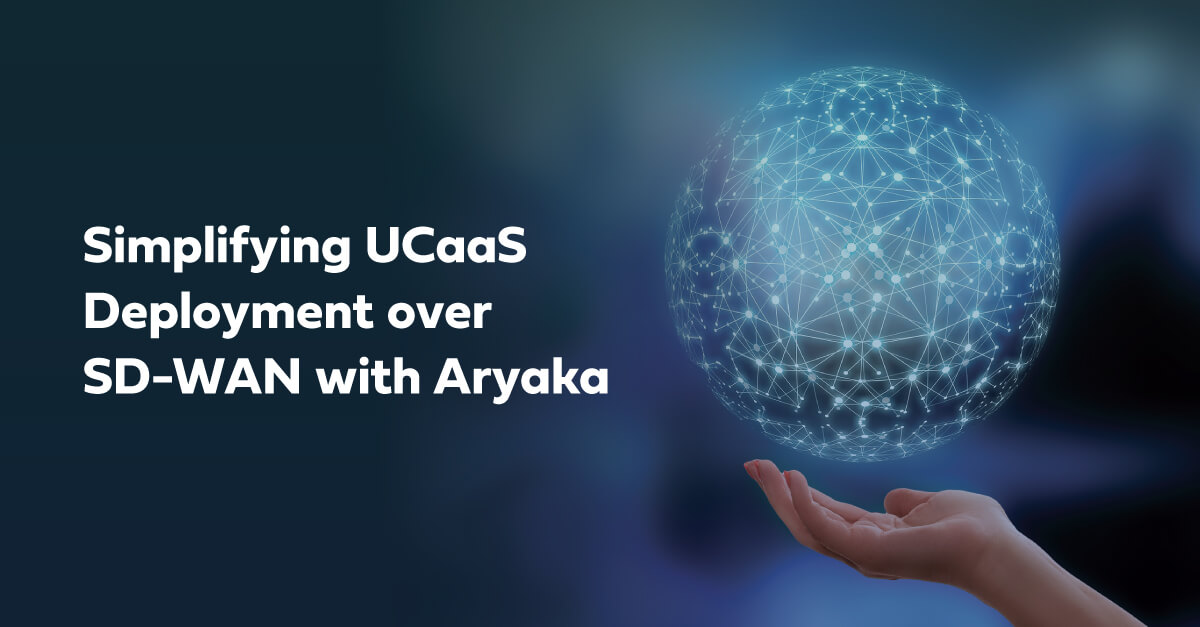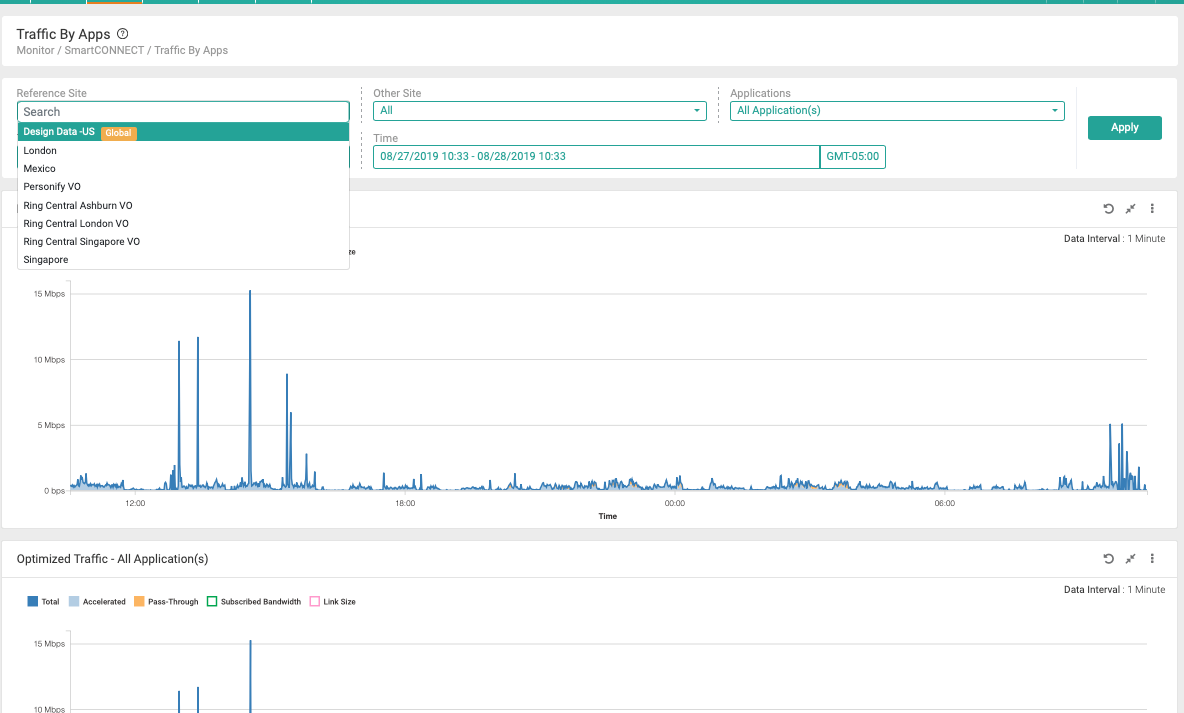Simplifying UCaaS Deployment over SD-WAN with Aryaka

Enterprises are adopting both UCaaS and SD-WAN solutions at a rapid pace, and many enterprises are adopting both technologies simultaneously. According to Gartner, by 2021, 90% of IT leaders will not purchase new premises-based UC solutions because cloud UC offerings are surging far ahead in terms of features, functions, portals, analytics and dashboards.
As enterprises roll out UCaaS, user experience, availability and security are top priorities. The lack of deterministic behavior in underlying network architectures that fail to take optimal cloud application support into account stand in the way of delivering on those top priorities. Finally, as companies often set out to adopt SD-WAN and UCaaS simultaneously, harmonizing the two technologies can become quite challenging.
So – how do we ensure a consistent, superior user experience? It is hard enough to implement end-to-end network QoS for traditional on-premise Unified Communications. And now we need to consider the cloud on-ramp network QoS over SD-WAN in the equation, as well as monitor the cloud SLAs.
Aryaka’s fully managed solution was designed from the ground up as a cloud-first architecture, thus reducing the complexity of rolling out a UCaaS solution. Aryaka sets industry standards for availability, deterministic network behavior and security. Typically, internet quality is considered a design consideration outside the control of the SD-WAN domain, but the Aryaka solution avoids that potential pitfall. Aryaka recognizes and marks UCaaS traffic, steering it optimally and dynamically across hardened internet access links and through the global L2 Aryaka private network infrastructure.
When it comes to delivering optimal UCaaS performance, these are some key architectural considerations:
-
- Latency: In global deployments, especially when covering long distances, some latency is dictated by the basic laws of physics of light traveling over fiber. It takes 200ms to cover the equatorial circumference of 40k kms of our planet over fiber, and there’s nothing we can do about that until there is a potential quantum entanglement breakthrough. At best we can expect up to 20-30ms latency on the last mile links when using hardened internet connectivity. ITU G.114 recommends to keep latencies under 150ms for voice communications – and we have all experienced situations where, due to latencies well over 150ms, participants in a conversation start to inadvertently talk over each other, and initiate the awkward “No you, go … Ok I’ll… oh no… sorry you go…” exchange. We have to be aware that we’ll be running close to this limit when we deploy UCaaS between global locations in the Americas, Europe, Asia and Australia. So anything the network infrastructure can do to keep things close down to a theoretical minimum latency helps. And Aryaka’s global L2 network is ideally suited to do that.
- Jitter: We have already established that, as a global enterprise, there’s little we can do to avoid minimum latencies that may hover around G.114’s maximum recommended latency of 150ms as we deploy UCaaS. Because of this, it is imperative we do anything we can to deliver on predicable and low jitter behavior in order to avoid negatively impacting users’ quality of experience and productivity. The basic Unified Communications design rule states that jitter should be under 30ms. Even that may easily push things well over 150ms if you think about the realities of global deployments. Jitter reduction is a key benefit of using Aryaka’s global L2 network. With a global L3 packet infrastructure, there are no jitter guarantees, irrespective of allocated bandwidth pools. But with Aryaka’s L2 infrastructure without oversubscription, strict jitter guarantees can be delivered upon, and over the Aryaka infrastructure we typically see 100% consistent jitter behavior well under 5ms.
- Packet Loss: Truth be told, voice -unlike some data applications- can tolerate some packet loss, up to 1% being the generally agreed upon standard. The human ear tries to interpolate and make sense of the slightly garbled communication that results from up this 1% packet loss. Beyond that, things become frustrating very quickly (we’ve all experienced those tricky garbled voice or video calls). This happens to be another area where the Aryaka infrastructure excels: we combine a loss-free global L2 core network with edge technologies that can completely eliminate packet loss in the last mile (I’ll refer to my SmartLink blog for an explanation on how we achieve that with a few patented technologies).
- UCaaS Cloud Peering: This one is simple, but crucially important as you deploy UCaaS. Let’s just say that if you have -I’ll use our own Aryaka example- a marketing team in the US West Coast and one in India, the results if you backhaul both of them to just one peering point to your UCaaS provider in either location are likely to be underwhelming for UCaaS communications (which we use extensively, I can assure you), irrespective of whether you use MPLS or internet. In fact, the latter may have an advantage because the DNS lookup will try to route you directly to a nearby peering point, but you’ll never know and you have little control over that. In the Aryaka solution, we establish VOs (virtual offices) in optimal peering areas to SaaS applications in general and UCaaS partners in particular. This means your business-critical collaboration traffic will always take the optimal route through the Aryaka L2 infrastructure to the best possible UCaaS providers’ peering points.

- Underlay and Overlay Visibility: UCaaS deployment is a posterchild for exposing some of the complications that can arise from many SD-WAN solutions’ tendency to force users to reconcile virtual overlay and physical underlay behavior by looking into different tools, because real-time applications are unforgiving. If voice quality regularly deteriorates, or if you get SIP codes that show sessions regularly fail, what is the reason? Insufficient virtual resources in the virtual overlay? Overloaded physical resources in the underlay? I’ll refer to another blog for this one, suffice to say the Aryaka architecture delivers on the benefits of SD-WAN without impacting consolidated, end-to-end visibility via the MyAryaka customer portal.
To sum it up: By rolling out UCaaS over Aryaka’s 100% Managed SD-WAN, network architects can deliver on the following benefits:
- Optimal peering architecture to leading UCaaS providers’ clouds like RingCentral, 8×8, Microsoft Teams and others
- Optimization technologies that eliminate packet loss and ensure optimal latency and jitter over last-mile internet links for UCaaS traffic
- Deterministic latency over a global infrastructure with virtually no jitter
- Under 30ms of first mile latency to 95% of customers, partners, suppliers and employees
- Complete end-to-end, consolidated visibility into every network performance aspect that influences UCaaS user experience
Aryaka delivers on an architecture that fundamentally simplifies the interaction between its fully-managed SD-WAN infrastructure and UCaaS solution deployments. Aryaka automatically delivers on optimal UCaaS peering points, optimizes the behavior of the last-mile internet connection to the branch and effectively secures the enterprise network. With Aryaka, network managers can rest assured they deliver a superior user experience for UCaaS collaboration tools that boost knowledge worker productivity.

